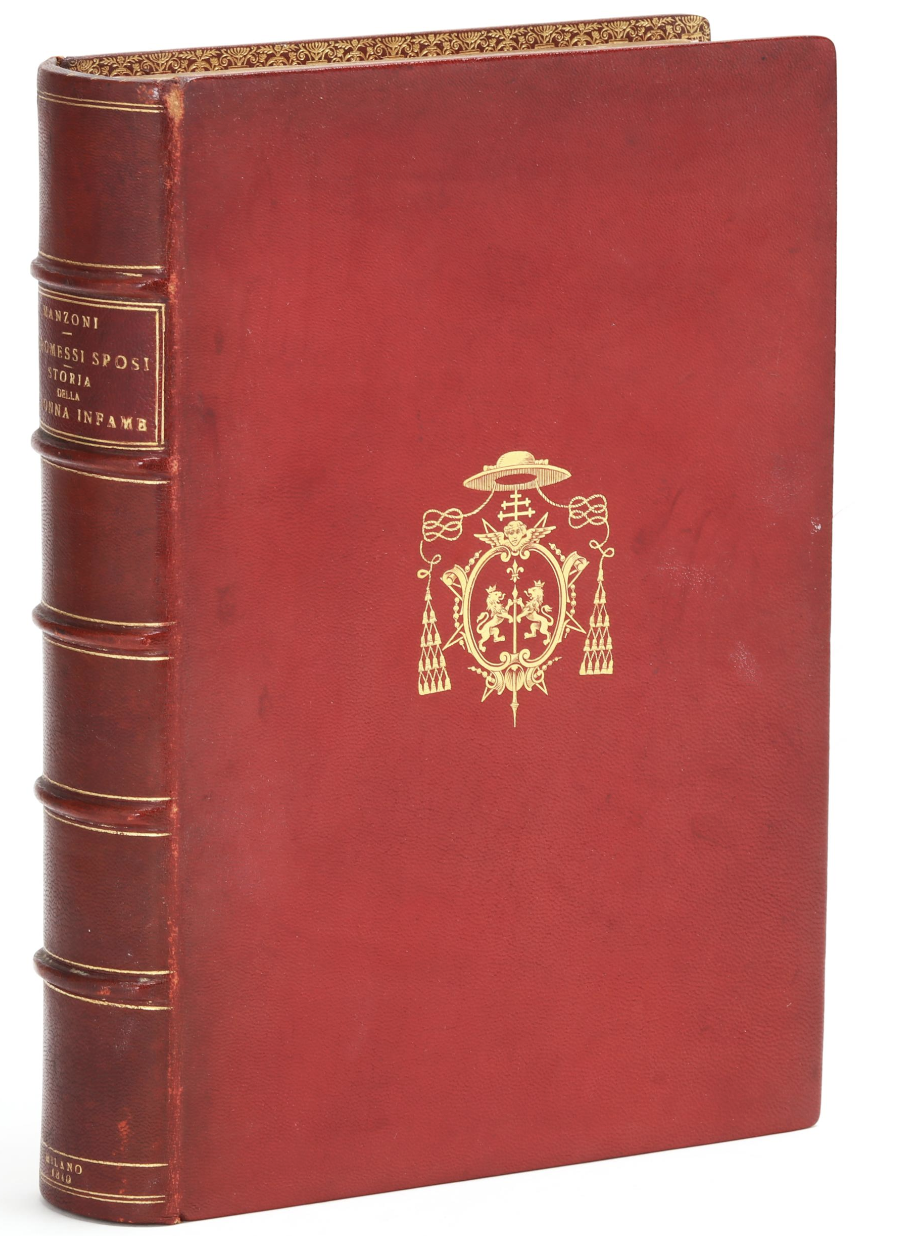
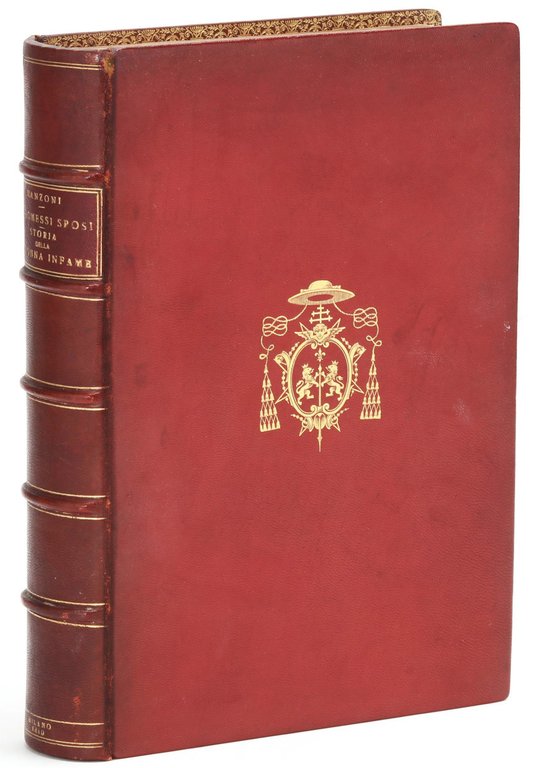
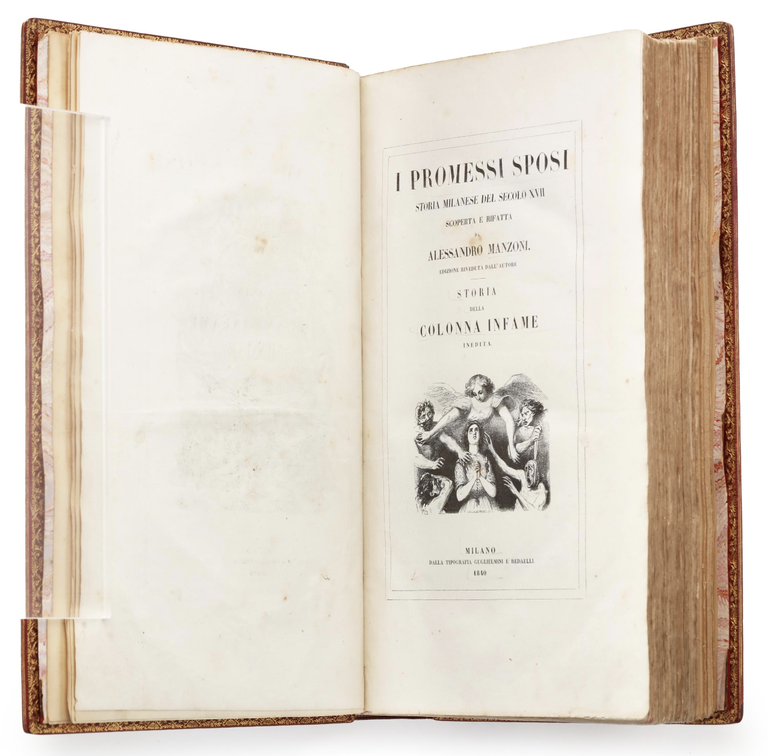
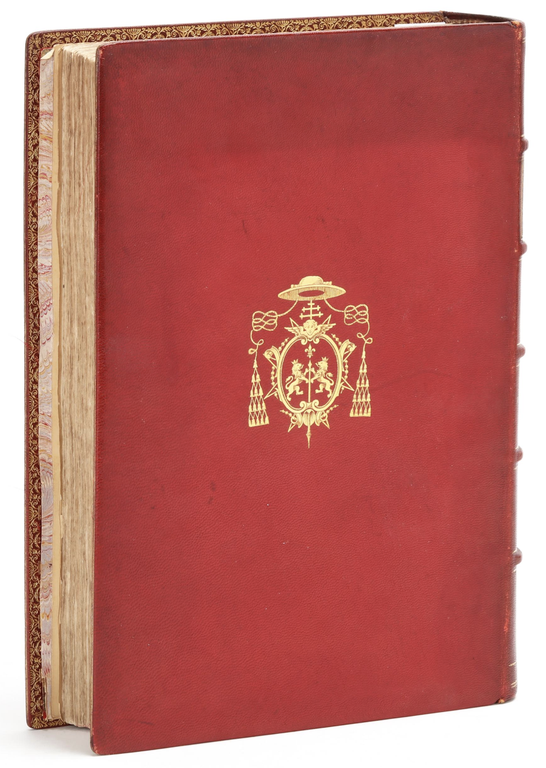

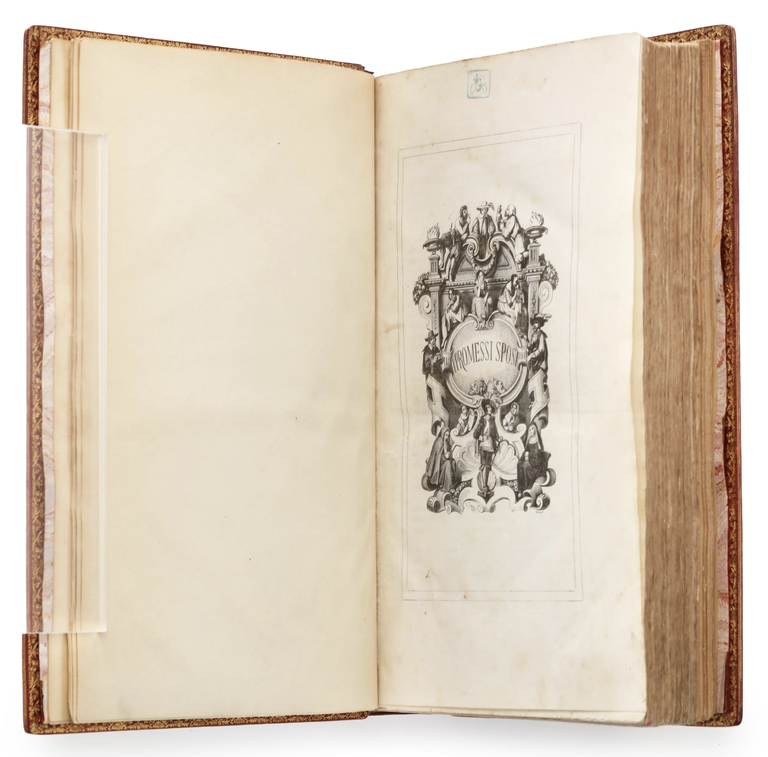
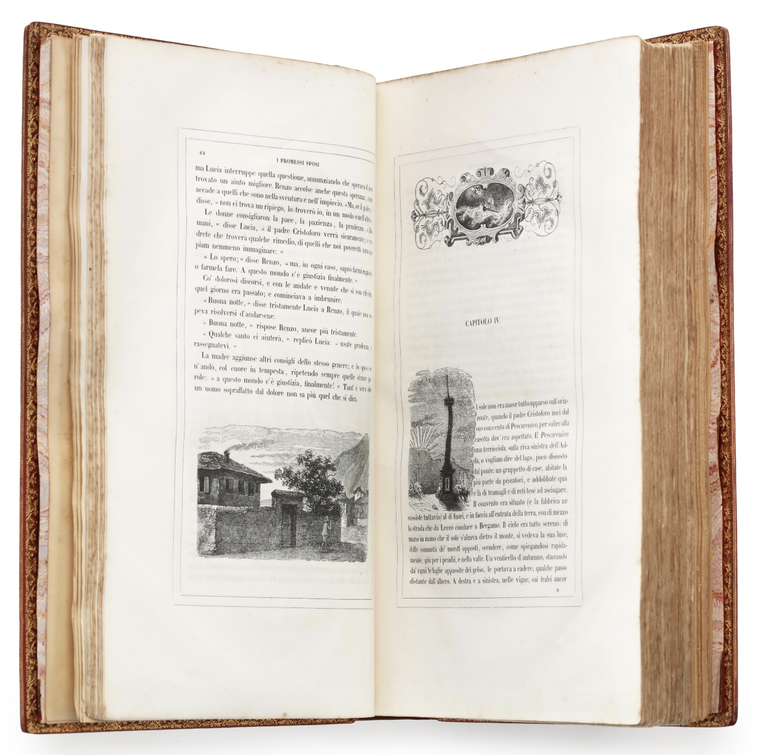
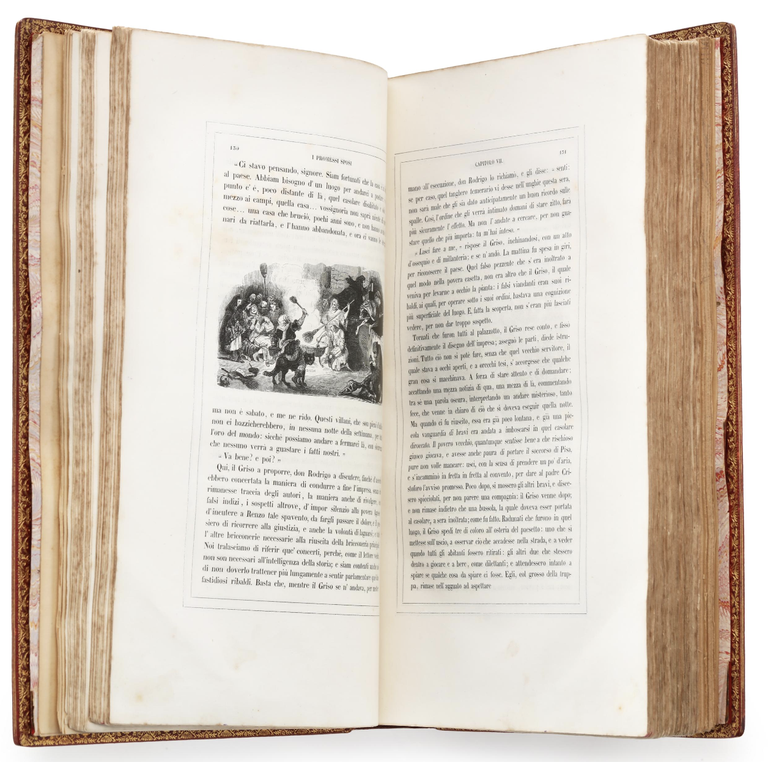
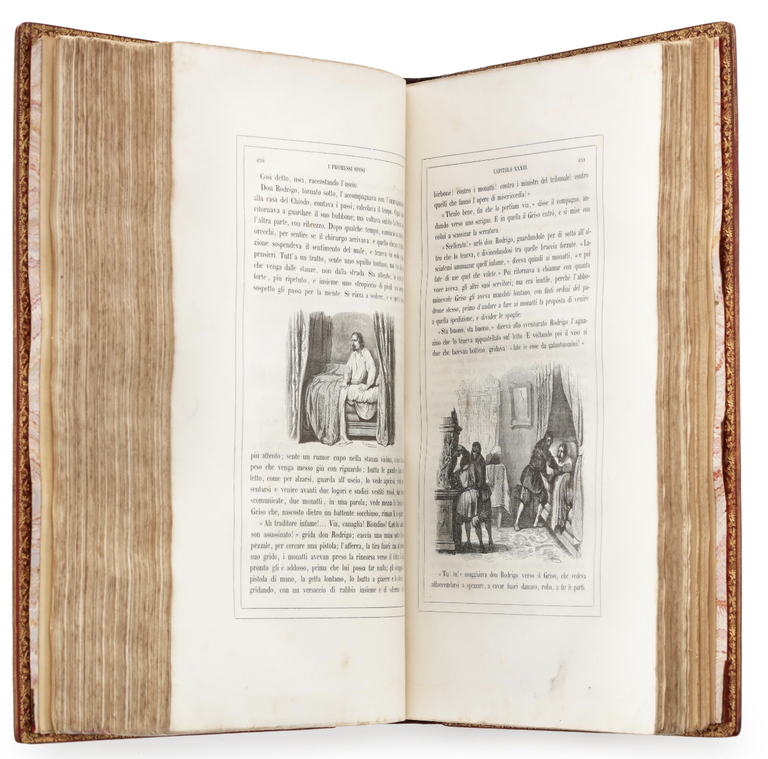
Libri antichi e moderni
MANZONI, Alessandro (1785-1873)
I promessi sposi storia milanese del secolo XVII scoperta e rifatta da Alessandro Manzoni. Storia della colonna infame inedita
Tipografia Guglielmini e Radaelli, 1840
2800,00 €
Govi Libreria Antiquaria
(Modena, Italia)
Le corrette spese di spedizione vengono calcolate una volta inserito l’indirizzo di spedizione durante la creazione dell’ordine. A discrezione del Venditore sono disponibili una o più modalità di consegna: Standard, Express, Economy, Ritiro in negozio.
Condizioni di spedizione della Libreria:
Per prodotti con prezzo superiore a 300€ è possibile richiedere un piano rateale a Maremagnum. È possibile effettuare il pagamento con Carta del Docente, 18App, Pubblica Amministrazione.
I tempi di evasione sono stimati in base ai tempi di spedizione della libreria e di consegna da parte del vettore. In caso di fermo doganale, si potrebbero verificare dei ritardi nella consegna. Gli eventuali oneri doganali sono a carico del destinatario.
Clicca per maggiori informazioniMetodi di Pagamento
- PayPal
- Carta di Credito
- Bonifico Bancario
-
-
Scopri come utilizzare
il tuo bonus Carta del Docente -
Scopri come utilizzare
il tuo bonus 18App
Dettagli
Descrizione
4to (285x209 mm). 864 pp. With frontispiece, vignette on title page and 450 illustrations in text. Text within typographic frame. Late 19th-century gilt-tooled red leather, gilt and raised bands on spine, red satin and marbled paper endleaves, binding marked “Engel rel. Paris” (front joint repaired and darkened). Very good overall with light scuffing to boards, spine darkened, minor rubbing to joints, light to moderate foxing and toning throughout, fabric coming unglued in areas, small stamp on frontispiece, small tear to marbled endpaper, small hole on pp. 225/226 partially affecting the text but with no loss, bottom outer corner of p. 391 torn off, some offsetting of a few illustrations, bottom margin of a few leaves slighlty shorter than in others, bound with numerous blank leaves at the end. A good, wide-margined copy.
Provenance. On the panels gilt coat-of-arms of cardinal Mariano Rampolla del Tindaro (1843-1913). Born in Polizzi Generosa, near Cefalù, Sicily, the youngest son of Ignazio Rampolla, count of Tindaro, he studied at the Pontifical Gregorian University in Rome, where he earned a doctorate in utroque iure, was ordained priest in 1866, was appointed secretary of the S.C. Propaganda Fide for Oriental Rites in 1877 and 1880, and was elected titular archbishop of Eraclea and nuncio in Spain in 1882. Secretary of State from 1887 to 1903, he was created cardinal in 1887, grand prior of the Sacred and Sovereign Military Order of St. John of Jerusalem in 1896, and president of the Biblical Commission in 1902. He participated in the conclave of 1903, which elected Pope Pius X and during which Emperor Franz Joseph I of Austria-Hungary brought a veto against his election to the papacy. He was also elected president of the Roman Academy of St. Thomas Aquinas in 1910 and librarian and archivist of the Holy Roman Church in 1912. He died in Rome in 1913 (cf. J. LeBlanc, Dictionnaire biographique des cardinaux du XIXe siècle: contribution à l'histoire du Sacré Collège sous les pontificats de Pie VII, Léon XII, Pie VIII, Grégoire XVI, Pie IX et Léon XIII, 1800-1903, Montréal, 2007, p. 774-779; see also L. Trincia, Conclave e potere politico. Il veto a Rampolla nel sistema delle potenze europee, 1887-1904, Rome, 2004; and L. Trincia, J.-M. Ticchi, & L. Civinini, La figura e l'opera del cardinale Mariano Rampolla del Tindaro, Palermo, 2006). From the collection of Prof. Roberto Severino, Washington, D.C.
First edition of the final and defitinive version of most famous novel of the Italian literature, I Promessi Sposi, or ‘The Betrothed', whose cultural and linguistic impact on the formation of generations of Italians can hardly be underestimated.
After composing the tragedy Adelchi and the ode Cinque maggio (‘The Fifth of May'), Manzoni began in 1821 to work on a historical novel initially entitled Fermo e Lucia. The first draft of the novel was completed in September 1823. The following year Manzoni signed a contract with the publisher/editor Vincenzo Ferrario, one of the first in Italy to publish Walter Scott's novels, and obtained the imprimatur for his work, which had since been revised and renamed Gli sposi promessi (‘The Betrothed').
The first edition of the novel, although it bears the dates 1825-1826, was actually finished in June 1827 (hence the name “ventisettana” with which it is universally known), because of the continuous corrections of the author, who almost every day went to the Ferrario's workshop to read and modify the proofs. The success was striking: the two thousand copies of the print run on common paper and the few others on fine paper went sold out in less than two months and, as early as December 1827, with great despair of the author, appeared on the market eight pirate editions.
In July 1827, dissatisfied with the language of the novel, Manzoni moved with the whole family to Florence, where at the Gabinetto Vieusseux he fo

